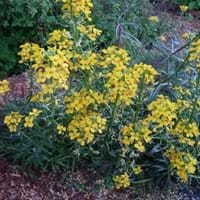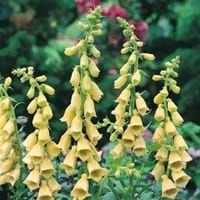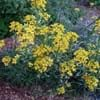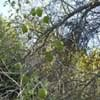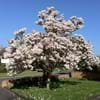Life Span
Annual and Perennial
Biennial
Type
Tender Perennial
Flowering Plants, Perennial
Origin
Southern Europe, Mediterranean
Southern Europe, Russia/Siberia, Turkey
Types
Not Available
Carillon, Temple Bells
Habitat
gardens, Grassland, Prairies
Terrestrial
USDA Hardiness Zone
7-9
3-8
Sunset Zone
4, 5, 6, 14, 15, 16, 17, 18, 19, 20, 21, 22, 23, 24
21,22
Habit
Mat-forming
Upright/Erect
Flower Color
Pale White, Pale Yellow, Yellow, Yellow green
Light Yellow, Brown
Flower Color Modifier
Bicolor
Bicolor
Fruit Color
Green
Non Fruiting Plant
Leaf Color in Spring
Gray Green
Green
Leaf Color in Summer
Gray Green
Green
Leaf Color in Fall
Gray Green
Green
Leaf Color in Winter
Light Green
Light Green
Plant Season
Spring, Summer, Fall, Winter
Spring, Summer
Sunlight
Full Sun, Partial Sun
Full Sun, Partial Sun
Type of Soil
Loam, Sand
Clay, Loam
The pH of Soil
Neutral, Alkaline
Neutral
Soil Drainage
Well drained
Well drained
Bloom Time
Spring, Late Spring, Early Summer, Summer, Late Summer, Early Fall
Early Summer, Summer
Tolerances
Drought
Not Available
Where to Plant?
Ground
Ground, Pot
How to Plant?
Seedlings, Stem Cutting
Divison, Seedlings, Seperation
Plant Maintenance
Medium
Medium
Watering Requirements
Allow soil to be completely dry in between waterings, Water Deeply, Water less during winter
Requires watering in the growing season
In Summer
Lots of watering
Lots of watering
In Spring
Moderate
Moderate
In Winter
Average Water
Average Water
Soil pH
Neutral, Alkaline
Neutral
Soil Type
Loam, Sand
Clay, Loam
Soil Drainage Capacity
Well drained
Well drained
Sun Exposure
Full Sun, Partial Sun
Full Sun, Partial Sun
Pruning
Cut or pinch the stems, Do not prune during shooting season, Prune if you want to improve plant shape, Prune prior to new growth, Remove deadheads
cut main flower spike
Fertilizers
No fertilizers needed
All-Purpose Liquid Fertilizer
Pests and Diseases
fungus, Insects, Red blotch
Downy mildew, Leaf spot, Powdery mildew
Plant Tolerance
Drought
Not Available
Flower Petal Number
Single
Single
Foliage Texture
Fine
Medium
Foliage Sheen
Matte
Matte
Attracts
Bees, Birds, Butterflies
Not Available
Allergy
Skin irritation
Blurred vision, Confusion, Depression, Diarrhea, Disorientation, drowsiness, Fainting, Halos around objects, Headache, Irregular or slow heartbeat, Lethargy, Loss of appetite, Low blood pressure, Nausea, Rash, Stomach pain, Vomiting, weakness
Aesthetic Uses
Beautification, Showy Purposes
Showy Purposes
Beauty Benefits
Not Available
Not Available
Environmental Uses
Air purification
Air purification
Medicinal Uses
No Medicinal Use
No Medicinal Use
Part of Plant Used
Whole plant
Whole plant
Other Uses
Showy Purposes
Used as Ornamental plant
Used As Indoor Plant
No
No
Used As Outdoor Plant
Yes
Yes
Garden Design
Alpine, Container, Edging, Foundation, Groundcover, Mixed Border, Rock Garden / Wall
Bedding Plant, Cutflower, Mixed Border
Botanical Name
Erysimum franciscanum
DIGITALIS grandiflora
Common Name
Franciscan wallflower, San Francisco wallflower
Large Yellow Foxglove, Yellow Foxglove
In Hindi
Franciscan wallflower
पीला Foxglove
In German
Franziskaner Mauerblümchen
Gelber Fingerhut
In French
wallflower franciscaine
Digitale Jaune
In Spanish
alhelí franciscana
Foxglove amarillo
In Greek
Φραγκισκανών wallflower
κίτρινο Foxglove
In Portuguese
wallflower Franciscan
Foxglove amarelo
In Polish
wallflower Franciszkanów
żółty naparstnica
In Latin
Francisci Wallflower
Yellow Foxglove
Phylum
Magnoliophyta
Magnoliophyta
Class
Magnoliopsida
Magnoliopsida
Order
Brassicales
Scrophulariales
Family
Brassicaceae
Scrophulariaceae
Clade
Angiosperms, Eudicots, Rosids
Angiosperms, Asterids, Eudicots
Tribe
Not Available
Not Available
Subfamily
Not Available
Not Available
Number of Species
Not Available
Not Available
Importance of Franciscan Wallflower and Yellow Foxglove
Want to have the most appropriate plant for your garden? You might want to know the importance of Franciscan Wallflower and Yellow Foxglove. Basically, these two plants vary in many aspects. Compare Franciscan Wallflower and Yellow Foxglove as they differ in many characteristics such as their life, care, benefits, facts, etc. Every gardener must at least have the slightest clue about the plants he wants to plant in his garden. Compare their benefits, which differ in many ways like facts and uses. The medicinal use of Franciscan Wallflower is No Medicinal Use whereas of Yellow Foxglove is No Medicinal Use. Franciscan Wallflower has beauty benefits as follows: Not Available while Yellow Foxglove has beauty benefits as follows: Not Available.
Compare Facts of Franciscan Wallflower vs Yellow Foxglove
How to choose the best garden plant for your garden depending upon its facts? Here garden plant comparison will help you to solve this query. Compare the facts of Franciscan Wallflower vs Yellow Foxglove and know which one to choose. As garden plants have benefits and other uses, allergy is also a major drawback of plants for some people. Allergic reactions of Franciscan Wallflower are Skin irritation whereas of Yellow Foxglove have Blurred vision, Confusion, Depression, Diarrhea, Disorientation, drowsiness, Fainting, Halos around objects, Headache, Irregular or slow heartbeat, Lethargy, Loss of appetite, Low blood pressure, Nausea, Rash, Stomach pain, Vomiting and weakness respectively. Having a fruit bearing plant in your garden can be a plus point of your garden. Franciscan Wallflower has no showy fruits and Yellow Foxglove has no showy fruits. Also Franciscan Wallflower is not flowering and Yellow Foxglove is not flowering . You can compare Franciscan Wallflower and Yellow Foxglove facts and facts of other plants too.
